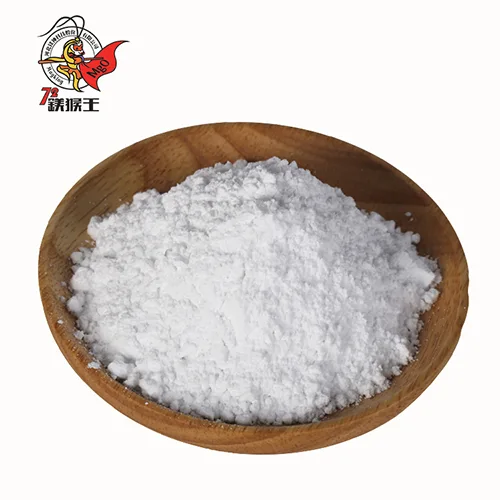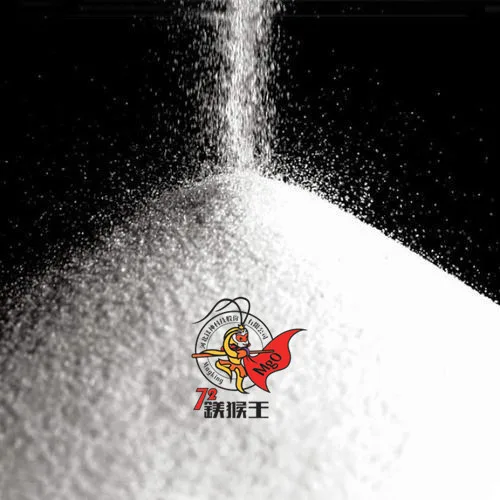Nano magnesium oxide (MgO) is gaining significant attention across multiple industries due to its unique physical and chemical properties. Unlike conventional MgO, its nanosized structure provides a higher surface area, enhanced reactivity, and improved performance in various applications. From material science and environmental management to biomedicine and energy sectors, nanoscale MgO is proving to be a game-changer. This article explores its key applications, benefits, and core advantages, ensuring accuracy and clarity for both professionals and enthusiasts.
Main Application Areas
Materials Science and Engineering
Composite Material Reinforcement
Nanoscale MgO is widely used as a reinforcing agent in composite materials. Due to its high surface area and superior interaction with polymer matrices, it enhances mechanical properties such as tensile strength, impact resistance, and thermal stability. It is particularly beneficial in:
- Plastics and Polymers: Improves durability and reduces degradation under harsh conditions.
- Ceramics: Enhances toughness and thermal shock resistance.
- Construction Materials: Increases compressive strength in cement-based composites.

Flame Retardant Materials
Nano MgO plays a crucial role in fire-resistant materials due to its ability to:
- Act as a heat sink: Absorbs heat through endothermic decomposition, delaying ignition.
- Form a protective barrier: Reacts with combustion gases to create an insulating layer, preventing oxygen penetration.
- Enhance synergy with other flame retardants: Works effectively with aluminum hydroxide and phosphorus-based retardants to improve fire resistance in textiles and polymers.
High-Temperature Superconducting Materials
Nano MgO serves as a substrate or additive in high-temperature superconductors, aiding in:
- Structural stability: Improves mechanical integrity under extreme conditions.
- Enhanced superconducting properties: Facilitates efficient electron transport in YBCO (Yttrium Barium Copper Oxide) superconductors.
- Dielectric tuning: Optimizes electrical insulation, crucial for power transmission applications.
Environmental Management
Adsorption and Catalytic Degradation of Pollutants
Nanoscale MgO is highly effective in environmental remediation due to its large surface area and catalytic properties. It is used for:
- Photocatalytic degradation: Breaks down organic pollutants using UV light, making wastewater treatment more efficient.
- Heavy metal adsorption: Removes lead, mercury, and cadmium from industrial effluents.
- Gas purification: Adsorbs volatile organic compounds (VOCs) and acidic gases, reducing air pollution.
Desulfurization and Denitrification
Nano MgO plays a role in reducing harmful emissions by:
- Capturing sulfur dioxide (SO2): Reacts with SO2 to form magnesium sulfate, reducing industrial air pollution.
- Enhancing nitrogen oxide (NOx) reduction: Serves as a catalyst in selective catalytic reduction (SCR) processes for cleaner emissions.
- Improving fuel desulfurization: Used in petroleum refining to lower sulfur content in fuels.
Biomedicine
Antimicrobial Agents
Nano MgO has strong antibacterial properties due to its ability to:
- Disrupt bacterial membranes: Generates reactive oxygen species (ROS) that damage bacterial cells.
- Prevent biofilm formation: Reduces bacterial adhesion on medical surfaces.
- Serve as a non-toxic alternative: Compared to silver nanoparticles, MgO is less cytotoxic while maintaining high efficacy.
Drug Carriers
The biocompatibility of nano MgO makes it suitable for targeted drug delivery by:
- Improving solubility of drugs: Enhancing bioavailability in pharmaceuticals.
- Providing controlled release: Reducing side effects and improving drug effectiveness.
- Functionalization with biomolecules: Allowing for precise targeting of diseased cells.
Bioimaging and Diagnosis
Nano MgO is being explored in medical imaging due to its ability to:
- Enhance contrast in imaging techniques: Potentially useful in MRI and fluorescence imaging.
- Act as a biosensor: Detecting specific biomarkers for disease diagnosis.
- Improve photothermal therapy: Offering applications in cancer treatment.
Energy and Electronics
Lithium-Ion Batteries
Nano MgO contributes to battery performance by:
- Stabilizing cathodes and anodes: Enhancing cycle life and energy density.
- Reducing thermal runaway: Improving safety in high-energy applications.
- Enhancing electrolyte stability: Prolonging battery lifespan.
Thermally Conductive Insulating Materials
Nano MgO is widely used in electronics and thermal management due to its:
- High thermal conductivity: Efficient heat dissipation in microelectronics.
- Electrical insulation properties: Preventing short circuits in high-power devices.
- Application in LED and semiconductor cooling: Ensuring long-term device performance.
Semiconductor Devices
Nano MgO is an essential material in semiconductor manufacturing, contributing to:
- Improved dielectric properties: Enhancing signal integrity in microchips.
- Reduction of defects: Providing a high-quality substrate for advanced electronic applications.
- High-frequency applications: Used in radio-frequency (RF) and microwave devices.
Other Emerging Fields
Aerospace
Nano MgO is being explored in aerospace engineering due to:
- Lightweight structural components: Improving fuel efficiency.
- Thermal protection for spacecraft: Enhancing resistance to extreme temperatures.
- Electromagnetic shielding: Reducing interference in communication systems.
Nuclear Waste Treatment
Nano MgO plays a crucial role in handling nuclear waste by:
- Encapsulating radioactive elements: Preventing leakage and contamination.
- Neutralizing acidic waste streams: Stabilizing hazardous compounds.
- Improving long-term storage safety: Enhancing containment materials.
Core Advantages of Nanoscale Magnesium Oxide
High Specific Surface Area
- Provides greater reactivity and adsorption capacity.
- Enhances catalytic efficiency in chemical processes.
Chemical Stability
- Resists degradation in harsh environments.
- Maintains long-term performance in industrial applications.
Biocompatibility
- Safe for biomedical use with minimal toxicity.
- Suitable for drug delivery and medical coatings.
Multifunctionality
- Serves diverse industries from healthcare to aerospace.
- Offers cost-effective solutions for multiple applications.
Cost-Effectiveness
- Lower production costs compared to other nanomaterials.
- Provides scalable solutions for industrial needs.
Conclusion
Nanoscale magnesium oxide is revolutionizing multiple industries, from material science to biomedicine and energy storage. Its high surface area, chemical stability, and multifunctional capabilities make it an invaluable resource for modern technology and sustainability efforts. As research advances, new applications and enhanced formulations of nano MgO will continue to emerge, further solidifying its role in cutting-edge industries.
FAQs
How does nanoscale magnesium oxide improve flame resistance?
Nano MgO absorbs heat through endothermic decomposition and forms a protective layer that prevents the spread of flames, enhancing fire safety in materials like textiles and polymers.
Is nanoscale magnesium oxide safe for medical applications?
Yes, nano MgO is biocompatible and has shown low toxicity, making it suitable for drug delivery, antimicrobial coatings, and bioimaging applications.
Can nanoscale magnesium oxide be used in renewable energy applications?
Absolutely. It improves lithium-ion battery performance, enhances thermal insulation in electronics, and supports catalytic processes in hydrogen production.


